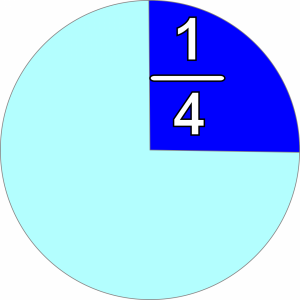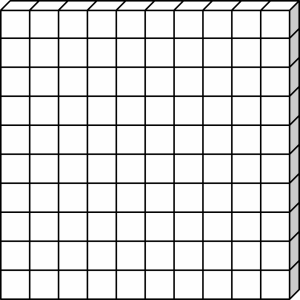Activity 1 – Halve It!
Focus – I understand what a half means – I can create and identify a half of a shape and can find a half of a number.
Resources – pencil and paper.
Work together to find as many examples as you can of halves being mentioned in newspapers or magazines.
These examples might come from sports reports (half-time, first half), times (half an hour), adverts (half-price), measurements (half full, half a cup), etc. Children draw, stick or write about them.
Activity 2 – Half a Shape!
Focus – I understand what a half means – I can create and identify a half of a shape and can find a half of a number.
Resources – pencil and paper.
Work together to draw shapes and find different ways of finding half.
Activity 3 – Half Full.
Focus – I understand what a half means – I can describe and record a half in a variety of different ways and can locate it on a number line.
Resources – measuring jugs / containers.
Find containers at home, such as measuring jugs, plastic bottles and cartons, and to half-fill them with water. Try to find how much each full container holds and work out approximately how much water they have put into each.
Activity 4 – Number Line Game
Focus – I understand what a half means – I can describe and record a half in a variety of different ways and can locate it on a number line.
Resources – pens, paper and some coins.
Draw a large number line with whole numbers from 0 to 10 and play the following game with another person. Each
places a coin on zero to start. They take turns to toss a third coin. If it lands heads up, they move their coin along 1/2 a place and say aloud the number landed on, e.g. one half, or three and a half. If the coin lands tails up, they move on 1 whole. The winner is the first player to reach or move beyond 10.
Activity 5 – Quarter It!
Focus – I understand what a quarter means – I can create and identify quarters of a shape and can find quarters of a number.
Resources – pens, paper.
Find as many examples as you can of quarters being mentioned in newspapers or magazines. These examples might come from sports reports (quarter-backs), times (quarter of an hour, three quarters of an hour, the first quarter of the year), measurements (quarter of a kilogram), etc. Draw, stick or write about them.
Activity 6 – Bob and Betty.
Focus – I understand what a quarter means – I can create and identify quarters of a shape and can find quarters of a number.
Resources – up to 24 small objects e.g. raisins, coins, beads.
Collect some small objects for sorting, e.g. coins, grapes or sweets. Choose a multiple of 4, such as 8, 12, 16, 20 or 24 and count out that many objects. Explain that they must share them between Bob and Betty. Bob gets one quarter of them and Betty gets three quarters of them each time, e.g. for 16 sweets, Bob gets 4 and Betty gets 12.
Repeat using different numbers , e.g. Share out 20 – Bob would get 5 and Betty 15, etc
Activity 7 – Quarter Number Line Game.
Focus – I understand what a quarter means – I can describe and record quarters in a variety of different ways and can locate them on a number line.
Resources – pens, paper, coins.
Draw a large number line with whole numbers from 0 to 5 and play the following game with another person. Each
places a coin on 0 to start. Take turns to toss a third coin. If it is heads up, move the coin one quarter along the line and say aloud the number landed on, e.g. one quarter, three and a half or two and three quarters. If the coin lands tails up, move on a half. The winner is the first player to reach or move beyond 5.
Activity 8 – Quarter To / Past.
Focus – I understand what a quarter means – I can describe and record quarters in a variety of different ways and can locate them on a number line.
Resources – none
Discuss together why we use the words ‘quarter past’ and ‘quarter to’ when saying times. Encourage your child to include diagrams, to mention the number of minutes past the hour and to explain the link between quarters and ‘half past’ the hour.
Activity 9 – Chocolate Puzzles.
Focus – I understand what a tenth means – I can create and identify tenths of a shape and can find tenths of a number.
Resources – pencil and paper.
Working together – discuss that four chocolate bars are made of ten chunks. Ask your child to work out how many chunks each person will get if all the chunks are shared equally between: two people, four people, five people, eight people, 10 people.
Encourage your child to draw diagrams to help them explore these puzzles.
Activity 10 – Tenths.
Focus – I understand what a tenth means – I can create and identify tenths of a shape and can find tenths of a number.
Resources – pencil and paper.
Draw five 5 × 2 grids. On each grid colour five squares to show 5/10 , but do it differently on each grid. Can you say another fraction that is equal to 5/10 ?
Activity 11 – Coin Collections – 10p.
Focus – I understand what a tenth means – I can describe and record tenths in a variety of different ways and can locate them on a number line.
Resources – 10p coin, pencil and paper.
Draw round a 10p coin ten times then colour some and write what fraction of £1 the coloured set is,
e.g. 40p is 4/10 of £1 or 90p is 9/10 of £1.
Repeat making different fractions.
Activity 12 – Coin Collections – 20p.
Focus – I understand what a fifth means – I can create and identify fifths of a shape and can find fifths of a number.
Resources – 20p coin, pencil and paper.
Draw around a 20p coin five times then colour some in. Then write what fraction of £1 the coloured set is, e.g. 40p is 2/5 of £1 or 80p is 4/5 of £1.
Activity 13 – Coin Collections – £1.
Focus – I can talk about finding hundredths.
Resources – Selection of coins – 1p, 2p, 5p, 10p, 20p and 50p
Collect together coins with totals less than £1. Draw around sets of the coins and then write what fraction of £1 each set is, e.g. 12p is 12/100 of £1 or 90p is 90/100 of £1.
Activity 14 – Badge Colouring.
Focus – I can talk about finding hundredths.
Resources – Squared paper (from school) + 5 pens
Draw a 10 × 10 grid on a piece of cm squared paper. Colour the paper using up to five colours to make a badge. Whole squares only should be coloured. Work together to write statements describing the fraction each colour is of their badge, e.g. 17/100 of the badge is red.
Activity 15 – Sorting Objects.
Focus – I can compare and order simple fractions – Halves, quarters, fifths and tenths.
Resources – paper and pens, 20 small objects.
Sort 20 small identical objects, such as 1p coins, grapes or sweets into two equal groups, then into four equal groups, then five equalgroups and then 10 equal groups. On a piece of paper record the number in the groups, e.g. 1/2 of
20 = 10, 1/4 of 20 = 5, 2/4 of 20 = 10, 3/4 of 20 = 15, etc. Make an extra note when group or groups have the same number,
e.g. 5/10 of 20 = 2/4 of 20 = 1/2 of 20 = 10.
Activity 15 – Sorting Objects 2 .
Focus – I can compare and order fractions – Other simple fractions.
Resources – paper and pens, 24 small objects.
Sort 20 small identical objects, such as 1p coins, grapes or sweets into 2 equal groups, then into 3 equal groups, then 4, then 6 and then 8 equal groups. Record number in the groups e.g. 1/2 of 24 = 12, 1/4 of 24 = 6, 2/4 of 24 = 12, 3/4 of 24 = 18.
Note when a group or groups have the same answer, e.g. 2/8 of 24 = 1/4 of 24 = 6.








